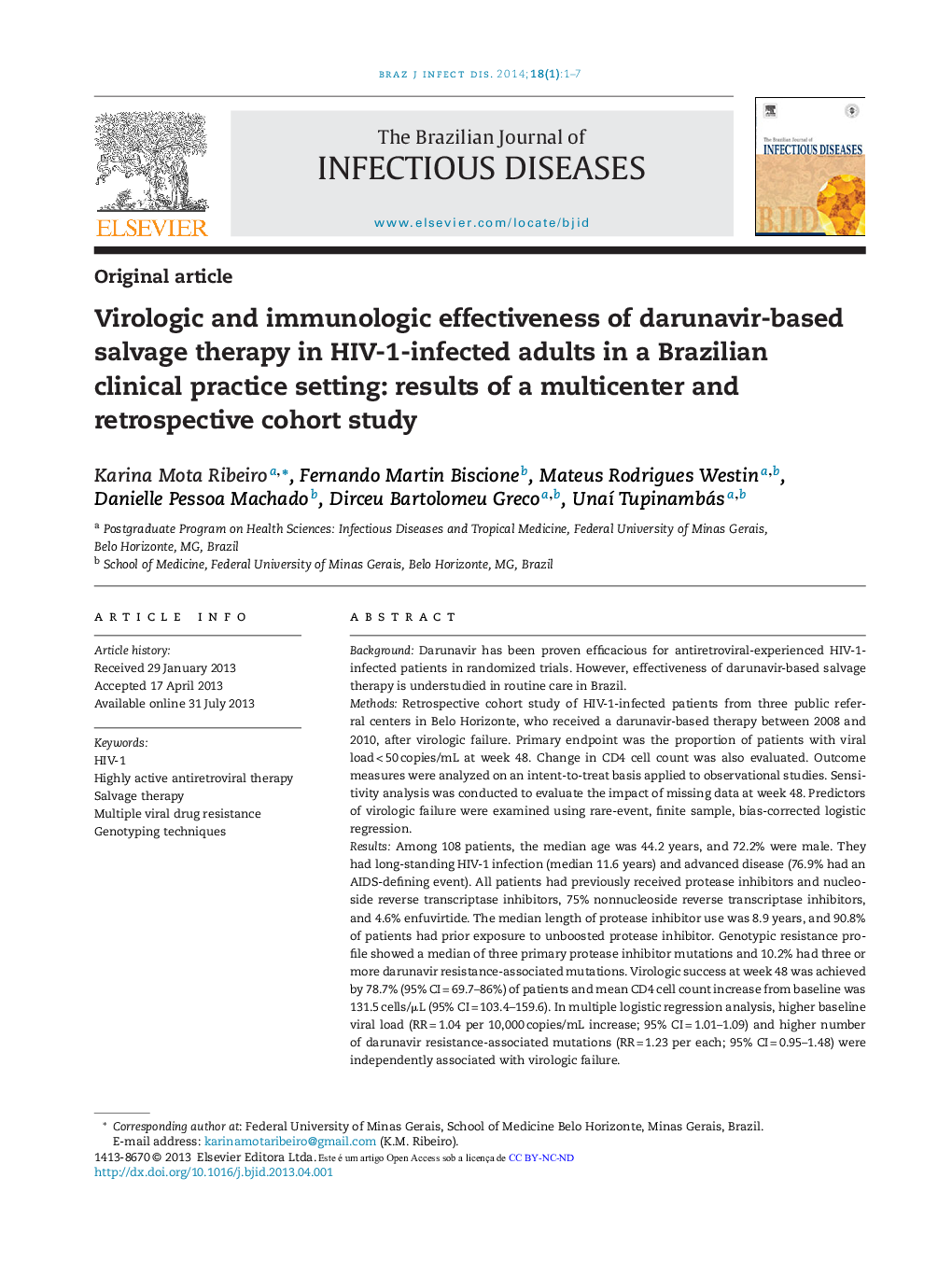| کد مقاله | کد نشریه | سال انتشار | مقاله انگلیسی | نسخه تمام متن |
|---|---|---|---|---|
| 3343972 | 1591197 | 2014 | 7 صفحه PDF | دانلود رایگان |

BackgroundDarunavir has been proven efficacious for antiretroviral-experienced HIV-1-infected patients in randomized trials. However, effectiveness of darunavir-based salvage therapy is understudied in routine care in Brazil.MethodsRetrospective cohort study of HIV-1-infected patients from three public referral centers in Belo Horizonte, who received a darunavir-based therapy between 2008 and 2010, after virologic failure. Primary endpoint was the proportion of patients with viral load < 50 copies/mL at week 48. Change in CD4 cell count was also evaluated. Outcome measures were analyzed on an intent-to-treat basis applied to observational studies. Sensitivity analysis was conducted to evaluate the impact of missing data at week 48. Predictors of virologic failure were examined using rare-event, finite sample, bias-corrected logistic regression.ResultsAmong 108 patients, the median age was 44.2 years, and 72.2% were male. They had long-standing HIV-1 infection (median 11.6 years) and advanced disease (76.9% had an AIDS-defining event). All patients had previously received protease inhibitors and nucleoside reverse transcriptase inhibitors, 75% nonnucleoside reverse transcriptase inhibitors, and 4.6% enfuvirtide. The median length of protease inhibitor use was 8.9 years, and 90.8% of patients had prior exposure to unboosted protease inhibitor. Genotypic resistance profile showed a median of three primary protease inhibitor mutations and 10.2% had three or more darunavir resistance-associated mutations. Virologic success at week 48 was achieved by 78.7% (95% CI = 69.7–86%) of patients and mean CD4 cell count increase from baseline was 131.5 cells/μL (95% CI = 103.4–159.6). In multiple logistic regression analysis, higher baseline viral load (RR = 1.04 per 10,000 copies/mL increase; 95% CI = 1.01–1.09) and higher number of darunavir resistance-associated mutations (RR = 1.23 per each; 95% CI = 0.95–1.48) were independently associated with virologic failure.ConclusionVirologic suppression is a realistic endpoint for most treatment-experienced patients who begin a darunavir-based therapy outside the controlled conditions of a randomized trial, at routine care settings.
Journal: The Brazilian Journal of Infectious Diseases - Volume 18, Issue 1, January–February 2014, Pages 1–7